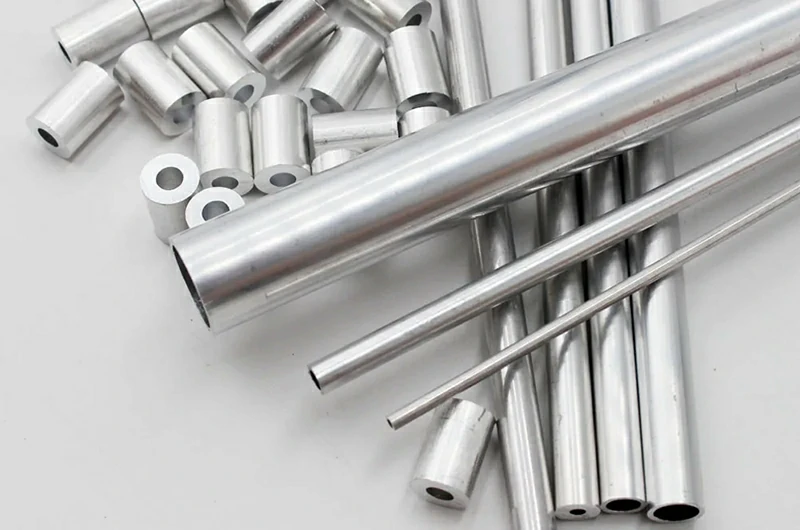6101 is a heat-treatable forged alloy that combines high conductivity with medium strength, making it an ideal conductor material for substations, power plants, power transmission/distribution systems, and industrial electrical systems.
6101 Aluminum Tubular Buspipe offers excellent corrosion resistance, weldability, bendability, and good formability.
As a leading aluminum bus pipe supplier, Mastar Metal provides bus pipes up to 15 meters long, customizable to your project needs. Standards include:
Aluminum Industry Standards: EN 755, ASTM B241, ASTM B 317M, IS:5082, IS:2673, GB/27676, GB/T 33228
Electrical Standards: IEC 60865, IEC 61597, IEC 61936, IEC 60439, IEC 62271
For enclosure-level routing and protection, see our aluminum bus duct solutions.
Introduction to aluminum tubular buspipe
Alloy: 6101
Temper: T6, T61, T63, T64, T65
Outer Diameter: 60-450mm
Wall Thickness: 3-15mm
Length: Up to 15m (with miter cutting and custom sizes available)
Production Method: Seamless extrusion
Surface Requirements: Smooth and flat surface, free from cracks, wrinkles, inclusions, deformation, and twisting
Quality Inspection: Includes dimensional measurement, conductivity testing, and resistance testing
For the broader product family and sizes beyond 6101, explore tubular buspipe solutions.
Electrical performance of 6101 aluminum tubular buspipe
| Property / Temper | 6101-T6 | 6101-T61 | 6101-T63 | 6101-T64 | 6101-T65 |
| Thermal conductivity W/mK (typical) | 218 | 222 | 218 | 226 | 218 |
| Thermal conductivity watts/sq.in/in℃ | 5.3/5.4 | 5.5/5.6 | 5.4/5.5 | 5.7/5.8 | 5.7/5.8 |
| Electrical conductivity percent IACS at 20℃(c) | 55/56 | 57/58 | 56/57 | 59.5/60.5 | 56.5/57.5 |
| Electrical Resistivity(dc) at 20 ℃ (68°F) micorohms/sq.in/ft (d) | 14.81/14.55 | 14.29/14.04 | 14.55/14.29 | 13.69/13.46 | 14.42/14.17 |
| Temperature coefficient of electrical resistance at 20℃/℃(e) | .00363/.00370 | .00370/.00383 | .0370/.00377 | 00393/.00400 | 00373/.00380 |
For laminated flat conductors used with 6101 systems, visit transformer strip.
Advantages of Mastar Metal's 6101 aluminum tubular buspipe
Excellent Conductivity and Thermal Performance: Efficient current conduction and heat dissipation ensure the safe and efficient operation of power systems.
Good Corrosion Resistance: Maintains stability in harsh environments, making it suitable for outdoor and high-humidity conditions.
Superior Weldability: Easy to weld, ensuring strong connections, ideal for complex power system installations and maintenance.
Good Bendability: Easily bends into required shapes, adapting to complex installation environments and simplifying the construction process.
Good Formability: Can be shaped through various processing methods, meeting different design requirements and enhancing project efficiency.
Typical deployments include utility-scale sites—see our wind power applications.
Product list of 6101 aluminum tubular buspipe
The 6101 Aluminum Tubular Buspipe enhances industrial electrical systems with its high conductivity aluminum. This seamless aluminum buspipe ensures efficient power distribution. Its corrosion-resistant aluminum is ideal for durable electrical components in both indoor and outdoor settings.
- 6101 t6 aluminum tubular buspipe
55% iacs conductivity, solution heat-treated for better mechanical strength. Used in high-strength areas like power construction and high-voltage cables.
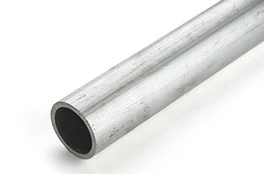
- 6101 t61 aluminum tubular buspipe
57% iacs conductivity, over-aged for higher conductivity but slightly lower mechanical strength. Ideal for high-conductivity applications like electrical bus conductors and accessories.

- 6101 t61p aluminum tubular buspipe
57% iacs conductivity, same as t61 but with maximum yield strength for consistent bending. Used for electrical equipment connectors.

- 6101 t63 aluminum tubular buspipe
56% iacs conductivity, a middle state between t6 and t61. Suitable for applications balancing conductivity and mechanical performance, such as power transmission and power stations.

- 6101 t64 aluminum tubular buspipe
59.5% iacs conductivity, partially annealed with the highest conductivity and formability. Ideal for power transmission conductors and high-current dc de-icing devices.

- 6101 t64p aluminum tubular buspipe
59.5% iacs conductivity, same as t64 but with consistent bending performance, suitable for electrical equipment connectors and precision electrical installations.

- 6101 t65 aluminum tubular buspipe
56.5% iacs conductivity, medium strength with controlled tensile and yield strength for repeatable bending. Ideal for complex electrical frameworks.

For complementary flat conductors in the same alloy family, see our aluminum busbar overview.
Advantages of tubular aluminum buspipe
Tubular aluminum buspipe offers several advantages over flat conductive aluminum bars. Its shape reduces the corona discharge onset voltage, enhancing stability, while its natural tubular structure provides superior heat dissipation, ensuring stable system operation. Additionally, tubular designs exhibit lower skin effect, resulting in uniform current density distribution, reducing power loss, and increasing transmission efficiency.
The inherent rigidity of the tubular shape in all directions enables it to withstand wind and ice loads, as well as short-circuit forces, making it particularly suitable for outdoor substations and switch structures that require large-span supports.
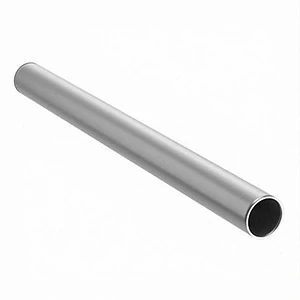
6101 round tubular aluminum buspipe
Round tubular buspipe, due to its low skin effect ratio, is the most effective ac bus conductor shape. Although its smaller heat dissipation surface area limits current ratings, the seamless tubular design makes it ideal for heavy-duty generators and switch busbars at central stations. The high-conductivity 1350 alloy and high-strength 6101 alloy are excellent options for this application.
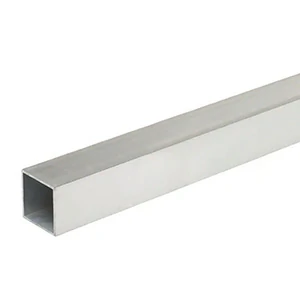
6101 square tubular aluminum buspipe
Square tubular buspipe has low skin effect and mounts easily on insulators; flat sides ease branch-terminal connections—common in generator/station busbars. Typical alloys: 6101-T61, 6063-T6, with staggered vents for cooling.
Need robust terminations for tubular bus systems? Explore our aluminium terminals.
Technical requirements for mastar metal aluminum tubular buspipe
Mastar metal aluminum tubular buspipe is manufactured using advanced hot-top casting, seamless tube processing, and tmtp heat treatment technology, ensuring smooth surfaces, high dimensional accuracy, strong tensile strength, and robust resistance to discharge and deformation. These features provide excellent thermal convection cooling, low temperature rise, minimal loss, high conductivity, and large current-carrying capacity in power systems. Specific technical requirements include:
- Pipes must have flat ends, perpendicular to the axis.
- The permissible length deviation range is +15mm to +25mm.
- Straightening spiral marks are allowed as long as they do not affect the outer diameter, with a maximum depth of 0.5mm.
- The buspipe's bend must satisfy m/l < 2.0 mm.
- The gap between the buspipe and the liner must not exceed 0.5mm, ensuring installation requirements are met.
- The surface should be smooth and free of cracks, wrinkles, inclusions, deformation, and twisting.
- The elastic modulus must be controlled to ensure that the deflection after installation remains within the specified range.
Comparison of 6101 vs 6063 vs 1350 aluminum buspipe
| Alloy | Temper | Formability | Machinability | General corrosion resistance | Weldability | Brazeability | Anodizing response |
| 6101 | T6, t63 | Fair | Fair | Excellent | Excellent | Excellent | - |
| 6101 | T61, t61p, t64, t64p | Good | Poor | Excellent | Excellent | Excellent | - |
| 6063 | O | Excellent | Poor | Excellent | Excellent | Excellent | Good |
| 6063 | T1, t4 | Good | Poor | Excellent | Excellent | Excellent | Excellent |
| 6063 | T5 | Good | Fair | Excellent | Excellent | Excellent | Excellent |
| 6063 | T6 | Fair | Fair | Excellent | Excellent | Excellent | Excellent |
| 1350 | H111 | Excellent | Poor | Excellent | Excellent | Excellent | - |
6101 offers higher mechanical strength than 6063, making it suitable for applications requiring greater mechanical stress resistance. While its conductivity is slightly lower than that of 1350, it still provides excellent electrical performance, ideal for high-efficiency power transmission and distribution systems.
6063 is easy to extrude and has good mechanical properties. Although its conductivity is slightly lower, its excellent workability makes it perfect for complex substation piping layouts and bus system installations.
1350, being pure aluminum, boasts extremely high conductivity, making it the best choice for applications demanding very high electrical conductivity, particularly in power transmission and distribution systems where maximizing current transmission efficiency is critical.
Each alloy and temper offers unique advantages and is suited to specific applications. Choosing the right product should depend on the specific project requirements and budget.
Balancing copper surface contact with lower weight? Review our copper-clad aluminum (CCA) flat bars.
The difference between Aluminum bus pipe and aluminum bus tube
Bus pipe is manufactured to a "nominal" (not actual) diameter. The wall thickness is described by a "schedule." I.e. 4" sch40. Bus
Tube is a round hollow material manufactured to a specific outside diameter (o.d.) And wall thickness. It is produced to meet the end users requirements.
Factors to consider when choosing bus conductors
When selecting bus conductors, it's important to consider factors such as the type of current, current-carrying capacity, frequency, operating voltage, voltage drop, short-circuit current, available space, taps, and connections. For high-current applications, current density is critical, while outdoor substations must account for weather conditions. Industrial design should focus on temperature rise, current capacity, and power loss.
Seamless vs. Structural pipes in substation construction
In substation construction, seamless pipes are recommended because they lack welded seams, which prevents splitting under repeated bending. Structural pipes, which have welded seams, are only suitable for structural applications and are not appropriate for handling fluid pressure or repeated bending.
Maximum buspipe length offered by Mastar Metal
Mastar metal typically offers buspipes ranging from 3 meters to 15 meters (10 to 50 feet) in length. Due to transportation limitations, the maximum length available is 15 meters (50 feet). For detailed information on buspipe lengths, please contact mastar metal.
How to order Mastar Metal aluminum buspipe
To order mastar metal aluminum buspipe, first determine the required outer diameter, wall thickness, alloy, and temper based on your project needs. Then, confirm the specific product performance parameters, such as conductivity, tensile strength, and yield strength. Finally, select the appropriate packaging method, and finalize payment terms and delivery dates.
For enclosure-level protection and layout routing in yards and galleries, see aluminum bus duct solutions.
Mastar Metal 6101 aluminum buspipe specifications
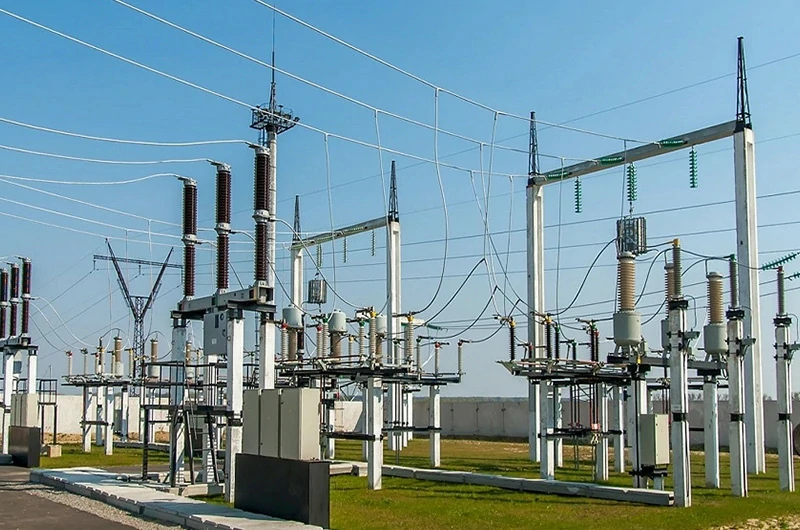
- Physical Properties of 6101 buspipe
- Sch40 aluminum pipe dimension table
- Sch80 aluminum pipe dimension table
- Outer diameter deviation
- Wall thickness deviation
| Physical Properties | T61 | T65 |
| Density | 0.098 lb/in3 | 0.098 lb/in3 |
| Ultimate Tensile Strength | 18 ksi | 25 ksi |
| Yield Tensile Strength | 11 ksi | 20 ksi |
| Shear Modulus | 3,700 ksi | 3,700 ksi |
| Hardness Rockwell | Brinell | B34 | 71 | B34 | 71 |
| Elongation at Break Percentage | 0.1 | N/A |
| Modulus of Elasticity | 9,900 ksi | 9,900 ksi |
| Poisson's Ratio | 0.33 | 0.33 |
| Melting Point | 1,150-1,210 °F | 1,150-1,210 °F |
| Specific Heat | 2.2 x 10^-1 BTU/lb-°F | 2.2 x 10^-1 BTU/lb-°F |
| Thermal Conductivity | 1,540 BTU-in/hr-ft^2-°F | 1,510 BTU-in/hr-ft^2-°F |
| Electrical Conductivity | 59% IACS | 58% IACS |
| Nominal pipe size | OD | ID | WA | Weight Per Ft |
| 1/8 | 0.405 | 0.269 | 0.068 | 0.085 |
| 1/4 | 0.54 | 0.364 | 0.088 | 0.147 |
| 3/8 | 0.675 | 0.493 | 0.091 | 0.196 |
| 1/2 | 0.84 | 0.622 | 0.109 | 0.294 |
| 3/4 | 1.05 | 0.824 | 0.113 | 0.391 |
| 1 | 1.315 | 1.049 | 0.133 | 0.581 |
| 1 1/4 | 1.66 | 1.38 | 0.14 | 0.786 |
| 1 1/2 | 1.9 | 1.61 | 0.145 | 0.94 |
| 2 | 2.375 | 2.067 | 0.154 | 1.26 |
| 2 1/2 | 2.875 | 2.469 | 0.203 | 2.004 |
| 3 | 3.5 | 3.068 | 0.216 | 2.62 |
| 3 1/2 | 4 | 3.548 | 0.226 | 3.15 |
| 4 | 4.5 | 4.026 | 0.237 | 3.733 |
| 5 | 5.563 | 5.047 | 0.258 | 5.06 |
| 6 | 6.625 | 6.065 | 0.28 | 6.564 |
| 8 | 8.625 | 7.981 | 0.322 | 9.88 |
| 10 | 10.75 | 10.02 | 0.365 | 14 |
| 12 | 12.75 | 11.938 | 0.375 | 18.52 |
| Nominal pipe size | OD | ID | WT | Weight Per Ft |
| 1/8 | 0.405 | 0.215 | 0.095 | 0.109 |
| 1/4 | 0.54 | 0.302 | 0.119 | 0.185 |
| 3/8 | 0.675 | 0.423 | 0.126 | 0.256 |
| 1/2 | 0.84 | 0.546 | 0.147 | 0.376 |
| 3/4 | 1.05 | 0.742 | 0.154 | 0.51 |
| 1 | 1.315 | 0.957 | 0.179 | 0.751 |
| 1 1/4 | 1.66 | 1.278 | 0.191 | 1.037 |
| 1 1/2 | 1.9 | 1.5 | 0.2 | 1.256 |
| 2 | 2.375 | 1.939 | 0.218 | 1.737 |
| 2 1/2 | 2.875 | 2.323 | 0.276 | 2.65 |
| 3 | 3.5 | 2.9 | 0.3 | 3.574 |
| 3 1/2 | 4 | 3.364 | 0.318 | 4.326 |
| 4 | 4.5 | 3.826 | 0.337 | 5.183 |
| 5 | 5.563 | 4.813 | 0.375 | 7.188 |
| 6 | 6.625 | 5.761 | 0.432 | 9.884 |
| 8 | 8.625 | 7.625 | 0.5 | 15.01 |
| 10 | 10.75 | 9.562 | 0.594 | 22.29 |
| 12 | 12.75 | 11.374 | 0.688 | 30.66 |
| Nominal OD | Ordinary level | ||
| Average & Nominal outer diameter | Any & Nominal outer diameter | ||
| H14 | T5A, T6, T10 | ||
| 50.00-80.00 | ±0.24 | ±0.30 | ±0.45 |
| > 80.00-120.00 | ±0.35 | ±0.40 | ±0.62 |
| >120.00-150.00 | ±0.45 | ±0.50 | ±0.75 |
| >150.00-200.00 | ±0.65 | ±0.7 | ±1.00 |
| >200.00-250.00 | ±0.77 | ± | ±1.2 |
| >250.00-300.00 | ±0.96 | ±1 | ±1.5 |
| >300.00-350.00 | ±1.3 | ±1.4 | ±1.8 |
| Nominal OD | High precision level | ||
| Average & Nominal outer diameter | Any & Nominal outer diameter | ||
| H14 | T5A, T6, T10 | ||
| 50.00-80.00 | ±0.15 | ±0.15 | ±0.3 |
| > 80.00-120.00 | ±0.20 | ±0.20 | ±0.41 |
| >120.00-150.00 | ±0.25 | ±0.25 | ±0.5 |
| >150.00-200.00 | ±0.38 | ±0.38 | ±0.76 |
| >200.00-250.00 | ±0.50 | ±0.5 | ±1.00 |
| >250.00-300.00 | ±0.64 | ±0.64 | ±1.25 |
| >300.00-350.00 | ±0.9 | ±0.9 | ±1.6 |
| Nominal wall thickness | 3-5 | >5 -8 | >8-10 | >10-12 | >12-15 | >15 -20 | ||
| Ordinary level | Average & nominal wall thickness | ±0.30 | ±0.50 | ±0.70 | ±0.9 | ±1.10 | ±1.3 | |
| Any & nominal wall thickness | H14 | ±0.40 | ±0.60 | ±0.90 | ±1.10 | ±1.3 | ±1.6 | |
| T5A, T6, T10 | ±12% of the specified wall thickness, maximum value is 1.90 | |||||||
| High precision level | Average & nominal wall thickness | ±0.15 | ±0.20 | ±0.38 | ±0.50 | ±0.70 | ±1.00 | |
| Any & nominal wall thickness | H14 | ±0.2 | ±0.3 | ±0.5 | ±0.76 | ±1.00 | ±1.4 | |
| T5A, T6, T10 | ±10% of the specified wall thickness, maximum value is 1.70 | |||||||


